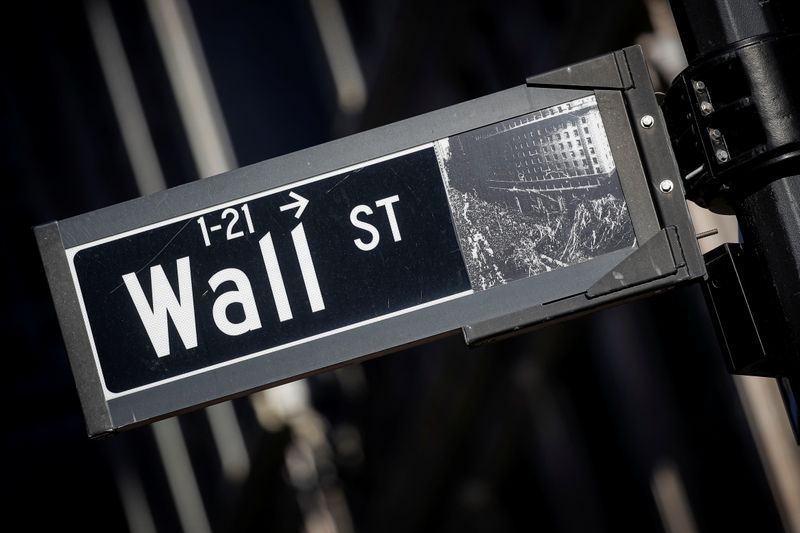This post was originally published on this site

It’s the first time since early 2021 that the consumer price index headline reading was lower than expectations. Wednesday’s report snapped the longest streak of months where inflation was either higher than or in line with economist estimates in at least two decades. With the S&P 500 futures up 1.7%, the market is poised for the best CPI day since 2014, outside those when data were released while stock exchanges were closed.
While the reading is welcome news for a Federal Reserve bent on tamping down the fastest price gains in 40 years, the market’s reaction — and the loosening of financial conditions it brings — could give the central bank reason for concern. For now, many on Wall Street are betting that stocks are headed higher since the Fed won’t have to bring the rate-hike bazooka to its September meeting.
Here’s what strategists were saying:
Neil Dutta, head of US economic research at Renaissance Macro Research LLC:
“Welcome news. Headline inflation came in flat in July with gasoline prices dropping sharply,” he said. “The market is now pricing in a 50 basis point move at the September meeting and equities are responding in kind. This data point will fuel talk of a policy pivot. But, for me, the issue really does boil down to the labor market. Short term inflation expectations and gasoline prices were the story in May and June. That’s not the story now. Wage growth is running red hot and absent a turnaround in productivity this will ultimately fuel higher prices.”
Jay Hatfield, founder and CEO at Infrastructure Capital Advisors:
“We could retest the June lows as Sept/Oct are almost always weak months for the stock market,” he said. “We expect that inflation has peaked as the Fed’s $900 billion reduction in the monetary base has caused the dollar to appreciate over 10%, which has caused commodities to plummet. Our year-end target is 4,600 on the S&P,” almost 10% above its current level.
Florian Ielpo, head of macro research at Lombard Odier Asset Management:
“This is overall good news for risky assets,” he said. “We are likely to have seen the peak of the inflation cycle in the US now -– and we’ll need August numbers as a confirmation. Unfortunately, we have not seen the peak of central bank rates nor the peak of European inflation. This probably means the surge in the US dollar should moderate now, as the inflation situation in Europe will become more preoccupying than that of the US.”
Richard Flynn, managing director of Charles Schwab UK:
“In recent months, the Fed has been talking and acting tough on fighting inflation – twice raising interest rates by 0.75 basis points, taking its benchmark to 2.25% — 2.5%. Investors are likely to ask how high will rates need to go to restore price stability,” he said. “Whilst a recession isn’t the Fed’s ambition, it may have already tightened financial conditions enough for one to develop.”
Peter Tchir, head of macro strategy at Academy Securities:
“Slightly better-than-expected inflation across the board. Initial reaction is lower yields, steeper curves (which I like). Higher stocks/risk assets — that was expected based on numbers, but I’m not sure the number beat the whisper. And it’s still high enough that the Fed is not completely out of picture, which may lead us back to fixating on recession, inventories, semiconductors, warnings, etc. So fading this on the risk side of the equation.”
Ian Lyngen, head of US rates strategy at BMO Capital Markets:
“Overall, incremental confirmation that the Fed’s efforts to combat consumer price increases have been successful. The combination of NFP and CPI for July leave the 75 bp vs. 50 bp Sept hike debate alive and well. Moreover, this means volatility around incoming data will remain elevated,” he wrote in a note.
Nancy Davis, founder of Quadratic Capital Management:
“The Fed’s rate hikes certainly have an impact on the economy, but not always in the way that people think. The Fed controls short-term interest rates. The Fed knows very well that by raising rates it will slow the economy. Typically, we expect to pay a higher interest rate to borrow money for longer times. That is not the case now. It is impressive how inverted the yield curve currently is. The 2s10s USD swap spot steepness is currently close to -63bps inverted. We believe this is an opportunity for investors who want to benefit from a normalization of the yield curve.”
Dan Suzuki, deputy chief investment officer at Richard Bernstein Advisors:
“The market is going to interpret this print as supportive of an easier Fed, and therefore good for risk assets. And on the margin, that’s a fair assessment. However, core CPI is still up close to 6% y/y and close to 4% on an annualized basis. So I don’t think this report alone changes the story that the Fed wants rates much higher because inflation is still too high,” he said. “At the same time, investors should remember why inflation pressures are easing, and that’s because of slowing demand. It’s hard to get too excited about risk assets when the underlying cause is slowing growth.”
Seema Shah, chief strategist at Principal Global Investors:
“Clearly, today’s CPI number is an all-out positive and markets will be rejoicing,” she said. “However, this period will likely be short-lived,” she said. “Make the most of today – for the US economy — nor markets — ultimately cannot avoid their fate.”
“Markets have become overly optimistic about the Fed outlook and even the economy,” she added. “But as we get into Q4, earnings growth will show clear signs of struggles and inflation will be easing only slowly, giving markets an important reminder the further rate hikes are absolutely necessary. That should lay the groundwork for renewed market declines.”
©2022 Bloomberg L.P.

